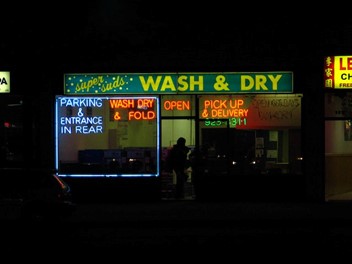Vended laundry businesses, more commonly known as laundromats, are some of the most successful businesses in the United States.
Vended laundry franchises are plentiful; membership is offered by companies such as Eco Laundry Company, Speed Queen, and Zoom Express. Compared to private ownership, franchised laundromats come with a number of benefits: a higher rate of success, higher profitability, an easier startup process, and more advantages for customers are a few of the highlights.
Below, David Shulick discusses the opportunities and benefits of franchises in the vended laundry industry.
Franchise Opportunities in Vended Laundry
Nearly 20,000 laundromat businesses are operating in the US, and a large portion of them belong to franchises. The startup costs associated with vended laundry businesses are high, and there can be many barriers to entry. Luckily, there are plenty of laundromat franchises eager to expand their reach across the country. Three of the most popular franchises are:
- Eco Laundry Company: This company prides itself on environmentally-sound business practices. It is also one of the more accessible franchises with its lower buy-in amount and liquid cash requirements.
- Speed Queen: Speed Queen has fairly strict requirements for membership, but they offer a lot to the people who make the cut: an online management platform, payments via an app, and bonus services such as pickup and delivery.
- Zoom Express: Zoom Express is another accessible franchise that specializes in time management; faster wash and dry times allow franchisees the opportunity to offer a unique service to their community.
No matter what type of laundromat business an individual has in mind, or what their net worth looks like, there is a franchise out there perfectly suited to their needs.
Benefits of Franchises Over Private Ownership
Vended laundry franchises are associated with several advantages over private ownership. Franchise-specific benefits do exist as well, but there are a few that are common to all.
Higher Rate of Success
Although laundromats in general have a very high rate of success, there is even more of a guarantee when the business belongs to a franchise. Networking opportunities, high-quality machines and products, and an intact consumer base all contribute to high rates of success with franchised laundromats.
Higher Profitability
A privately-owned vended laundromat will make, on average, $15,000-$100,00 each year. Laundry franchises, on the other hand, can make as much as $10,000-$40,000 each month. Since higher profitability will translate to better business security and more opportunities for growth, franchises are the clear winners here.

Easier Startup Process
Just like any other franchise industry, membership in a franchise streamlines the startup of a new business. Established marketing structures, supply chains, and well-tested equipment makes it a lot easier for new business owners to get their business up and running. Plus, there are plenty of experts available to answer questions or offer advice.
More Advantages for Customers
Many franchise locations offer unique benefits for their consumers that private owners just can’t offer. This can look like alternative payment methods (card or mobile), play areas for kids, pickup and delivery services, comfortable seating, and more.
Wrapping Up
The versatility of the vended laundry franchise market offers every individual the opportunity to get off to a great start in the industry. Given the long list of advantages and the incredibly high success rate, franchised laundromats are the best way forward.











